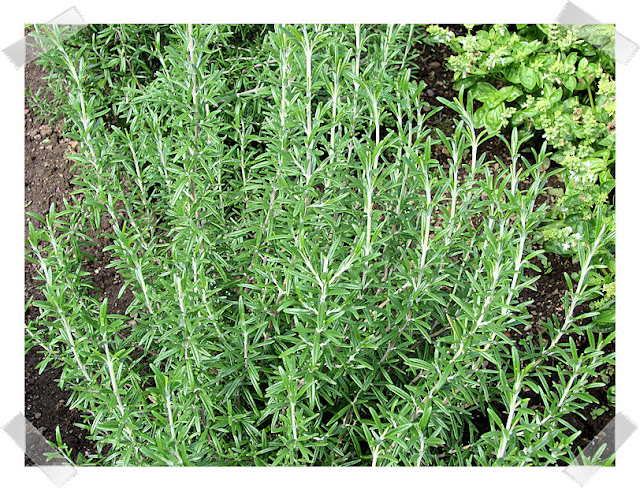 |
| Rosemary (Salvia rosmarinus syn. Rosmarinus officinalis) © Debs Cook |
As some of you know I've been on a bit of a herbal sabbatical, so this little snippet of news escaped me until yesterday, I'm sharing it in the event that it may have escaped others as well. Rosemary has been known by the Latin name of Rosmarinus officinalis since Swedish botanist Carl Linnaeus published his 'Species Plantarum' in 1753, which is when the international system of naming plants established by Linnaeus began. Back then Sage was in the genus Salvia and Rosemary was in the genus Rosmarinus because both plants were deemed to belong to two different genera.
However back in 2017 rosemary was sent off to the plant version of Ancestry DNA and after ananlysis it turned out like with humans that rosemary wasn't part of one family but another, so the members of the RHS Nomenclature and Taxonomy Advisory Group got together and in 2019 they agreed to absorb all the plants in the Rosmarinus genus into the genus Salvia. The group decided that the differences between sage and rosemary weren't sufficient to make them distinctly different, so from now on Rosemary will be known by the Latin name of 'Salvia rosmarinus'!
There's an old joke that I first heard in the 90's about botanists getting bored when it rains so they decide to rename a plant or mess with the genus information to relieve the boredom, did they do that this time? Apparently not, according to Country Life magazine "...the Royal Botanic Gardens, Kew, and many other of the world’s leading plant authorities, agree with the RHS’s view of Rosmarinus, having been convinced by molecular studies that place it in an enlarged and diverse, but genetically coherent genus Salvia. This does not mean that rosemary ‘is not a separate species of plant’, let alone one and the same as culinary sage (Salvia officinalis). Its revised status as a new Salvia species, far from diminishing ‘rosemary’, only heightens its importance."
The two herbs have always been members of the Lamiaceae plant family along with Basil, Mint, Marjoram, Lavender, Hyssop and Thyme and many other herbs, and the new Latin name change doesn't change that fact. DNA studies showed that rosemary belonged with the salvia's and not a genus in its own right, once that fact presented itself the scientists were left with 3 choices: -
1) Do nothing and ignore the differences, they could, but it wouldn't help with further study.
2) They could continue to recognise rosemary as a genus on its own, but that would mean changing the names of more than 700 species of Salvia.
3) The third option, and the one they decided to go with, is to absorb rosemary into the Salvia's as a subgenus. This third choice resulted in only 15 name changes, a lot less than 700 if they'd continued to recognise Rosemary as having its own genus. As well as Rosemary's Latin name change, Russian Sage formerly Perovskia atriplicifoli has also been absorbed into the salvia genus and will from 2019 onwards be known as Salvia yangii, a tad annoying for me as I've only recently mastered Russian Sage's old Latin name lol!
It will be several years until we see Rosemary appear in garden centres and herb nurseries with its new Latin name, plant labels are made and purchased in batches, so garden centres will want to use the old labels up first. I think it will also take a while for the herbal community to unlearn the Latin name we've always known it as. I know I will find it will need some getting used to, and of course even though it will now be incorrect you can still call it by its old Latin name, but henceforth the correct name for the herb is Rosemary (Salvia rosmarinus syn, Rosmarinus officinalis), we should count our blessings that at least they left the common name alone!
No comments:
Post a Comment
Thanks for you comment, I'll make it live as soon as I can and get back to you if required.